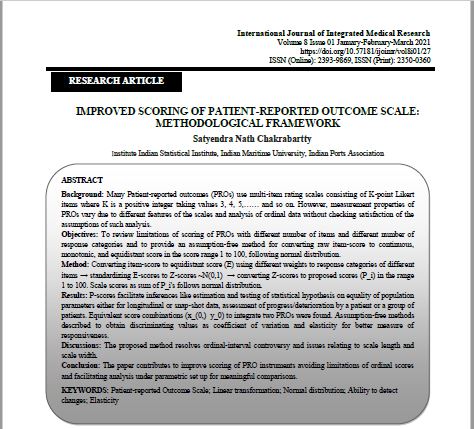Improved Scoring Of Patient-Reported Outcome Scale: Methodological Framework
Main Article Content
Abstract
Background: Many Patient-reported outcomes (PROs) use multi-item rating scales consisting of K-point Likert items where K is a positive integer taking values 3, 4, 5,…… and so on. However, measurement properties of PROs vary due to different features of the scales and analysis of ordinal data without checking satisfaction of the assumptions of such analysis.
Objectives: To review limitations of scoring of PROs with different number of items and different number of response categories and to provide an assumption-free method for converting raw item-score to continuous, monotonic, and equidistant score in the score range 1 to 100, following normal distribution.
Method: Converting item-score to equidistant score (E) using different weights to response categories of different items standardizing E-scores to Z-scores converting Z-scores to proposed scores ( in the range 1 to 100. Scale scores as sum of follows normal distribution.
Results: P-scores facilitate inferences like estimation and testing of statistical hypothesis on equality of population parameters either for longitudinal or snap-shot data, assessment of progress/deterioration by a patient or a group of patients. Equivalent score combinations ( to integrate two PROs were found. Assumption-free methods described to obtain discriminating values as coefficient of variation and elasticity for better measure of responsiveness.
Discussions: The proposed method resolves ordinal-interval controversy and issues relating to scale length and scale width.
Conclusion: The paper contributes to improve scoring of PRO instruments avoiding limitations of ordinal scores and facilitating analysis under parametric set up for meaningful comparisons.
